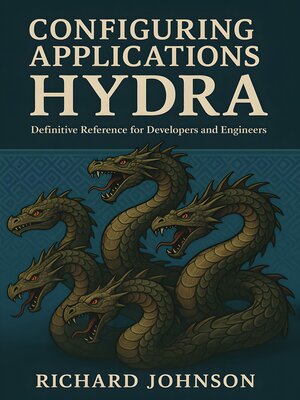Configuring Applications with Hydra
ebook ∣ Definitive Reference for Developers and Engineers
By Richard Johnson

Sign up to save your library
With an OverDrive account, you can save your favorite libraries for at-a-glance information about availability. Find out more about OverDrive accounts.
Find this title in Libby, the library reading app by OverDrive.



Search for a digital library with this title
Title found at these libraries:
| Library Name | Distance |
|---|---|
| Loading... |
"Configuring Applications with Hydra"
"Configuring Applications with Hydra" is a comprehensive and authoritative guide to mastering application configuration via Hydra, the cutting-edge Python framework for composable, scalable, and dynamic settings. From foundational concepts such as hierarchical and modular configuration, through to installation best practices and comparisons with alternative solutions, this book equips readers with a deep understanding of why and how Hydra addresses modern configuration challenges. Core topics such as OmegaConf integration, lifecycle management, and schema validation are meticulously explored, providing both clarity for newcomers and depth for seasoned practitioners.
The book proceeds to address real-world complexity, detailing powerful patterns for static and dynamic YAML-based configurations, command-line overrides, and extensibility through plugins and custom components. Readers will gain practical insights into optimizing configuration for large teams, managing multi-repository environments, auditability, secrets handling, and security. The intricacies of distributed execution, hyperparameter sweeps for machine learning applications, and pipeline orchestration are demystified, with clear explanations and actionable examples informed by industry practices.
With a dedicated focus on production-readiness, continuous validation, best practices, and long-term evolution, "Configuring Applications with Hydra" also delves into deployment strategies for containerized and orchestrated environments, runtime adaptation, and observability. The concluding chapters provide a forward-looking perspective on cross-language architectures, adaptive configuration patterns, and emerging research. Whether you are building robust machine learning workflows, managing sprawling enterprise services, or striving for reproducibility and maintainability in your configuration approach, this book offers an indispensable reference to harnessing the full potential of Hydra.







